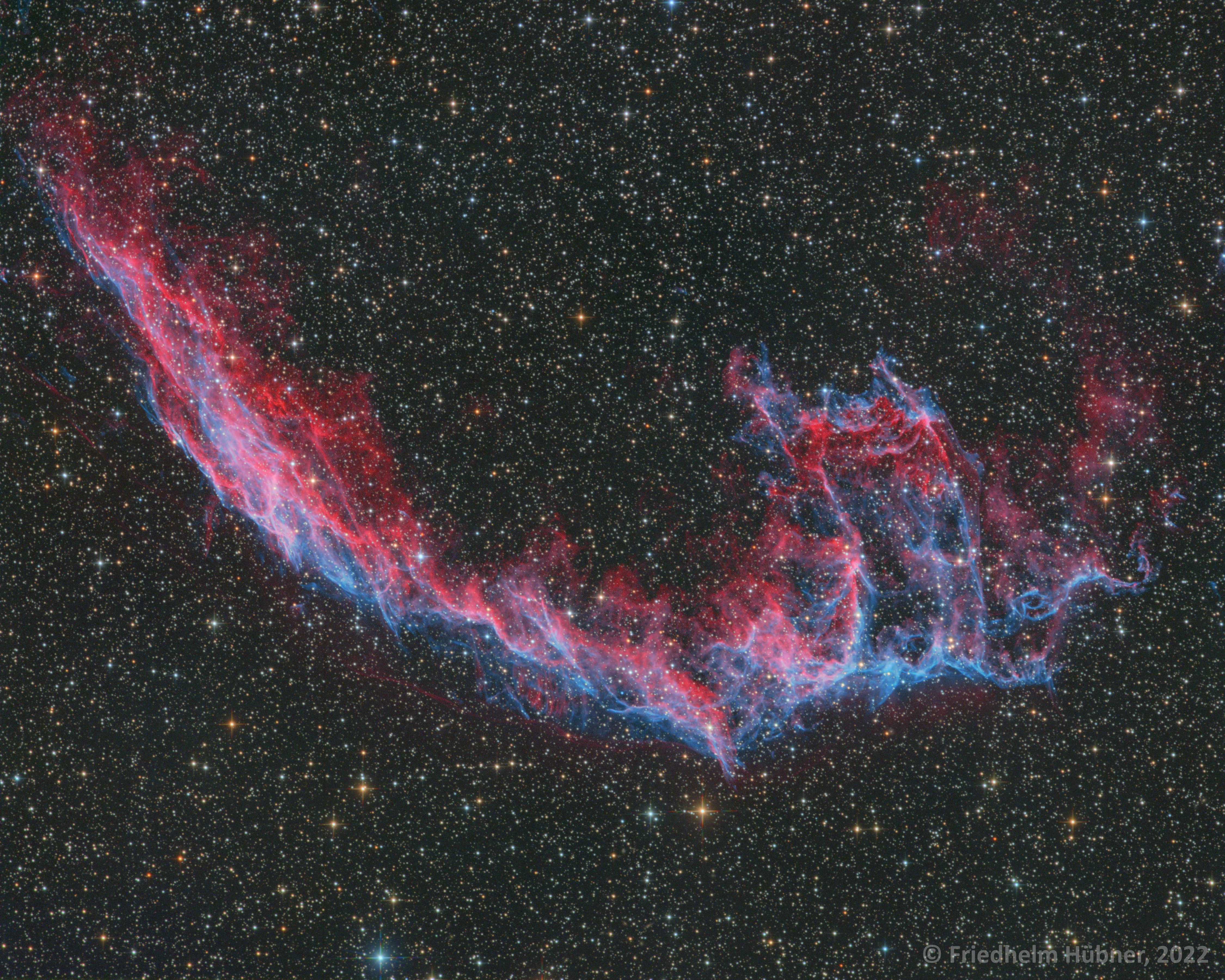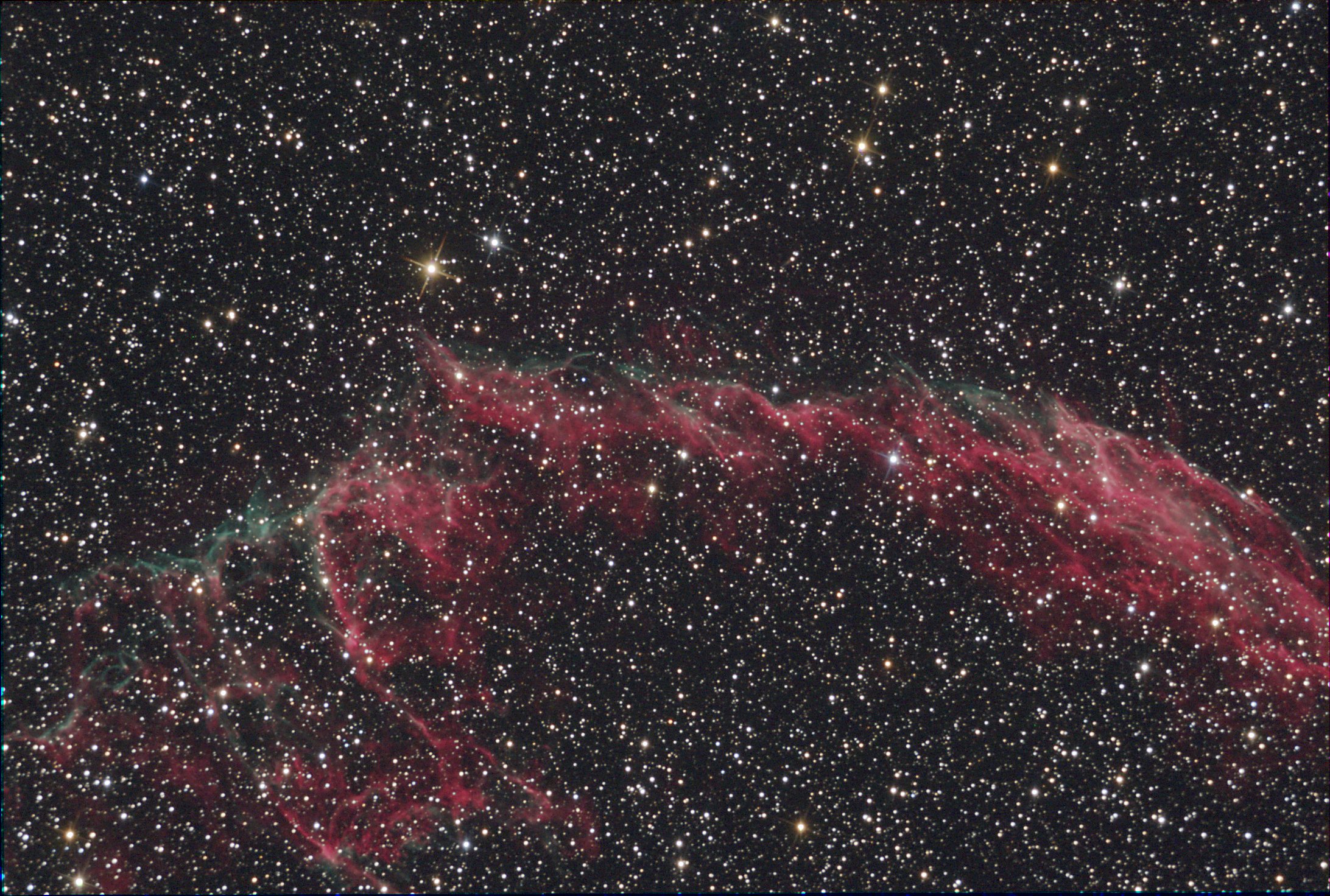|
NGC 6992 (Cyg)

Click on the image for a larger version
| Date/Site: |
15., 17., 18., 20. and 25. July 2022. Remote observatory on the AAR club's site in Presberg |
Exposure/
Filter: |
R: 32 x 300 seconds,
G: 12 x 300 seconds,
B: 12 x 300 seconds,
Hα: 32 x 600 seconds,
O3: 32 x 600 seconds (-20°C) |
| Camera: |
Moravian G3-16200 with Astronomik Type II-filters |
Optics/
Instrument: |
250mm f/4,7 Newton with VIP-3010 Paracorr on 10Micron GM1000 HPS |
|
Guiding: ASI120 attached to a 61mm-finder,
focusing: Microtouch and FocusMax,
data acquired remotely using CCD-Commander, PHD_Broker with PHD2/multistar-guiding and MaximDL 6,
processing: MaximDL 6 and PixInsight 1.8 |
Capturing the frames for this portrait of the Cirrus-nebula was a challenge. The moon was bright during the first quite short summernights. Because of the meanwhile common summer heatwave temperatures were high in these nights, so the camera had to be cooled slowly and in stages, in order to be able to reach the -20°C without overload of the cooling.
Considering the circumstances I am happy with the result. In the later nights with a less intruding moon I could acquire good RGB-data. Stars were removed from the stacked Hα- and O3-narrowbandframes with the Pixinsight-tool Starnet and then itegrated with the RGB-data. Colours are always problematic, when strong narrowband-data are added to a RGB-image. Actually the strong O3-emission of the Cirrus-nebula should give the image a more cyan hue, but this is just a matter of taste. Such a colouring I realized with pure narrowband-data.
With a much smaller instrument I produced a RGB-image in 2011 on the Rifugio Monte Muro in South Tyrol.
With hindsight I am always surprised about the result I could achieve with so few frames.
NGC 6992 (Cyg)

Click on the image for a larger version
| Date/Site: |
August 25th, 2011, Rifugio Monte Muro, Maurerberg, Southern Tyrol |
Exposure/
Filter: |
R: 3 x 600 seconds, G: 3 x 600 seconds, B: 3 x 600 seconds (-15°C) |
| Camera: |
SBIG ST10XME, CFW9 with SBIG LRGB-filters, AO-8 |
Optics/
Instrument: |
6"-Newton on Gemini 41 Observatory mount, RCC1 Coma-corrector |
|
Focusing with Robofocus |
|
Calibration, alignment and stacking: MaximDL 5.01,
Levels and curves: Photoshop CS |
Two galaxyclusters are visible just outside the filaments.
|

